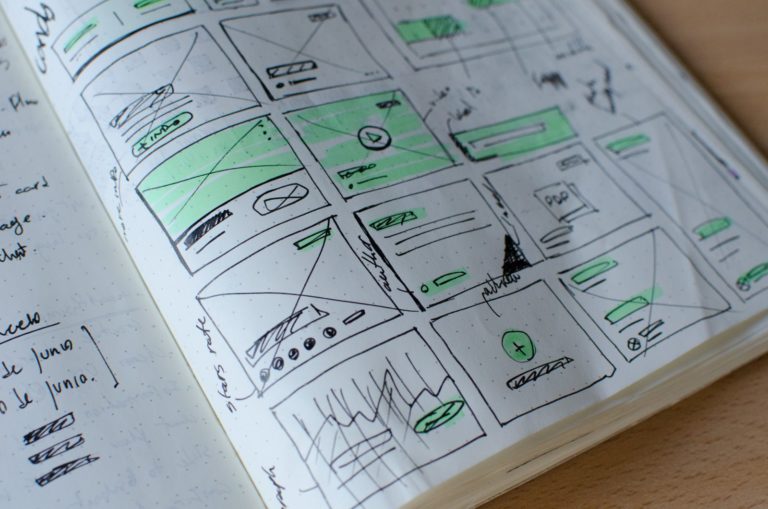Every website has a goal. Often too many goals that are not aligned if you are not setting up the expectations correctly. But even with multiple goals, there is always the #1 goal that should be followed prominently.
Our 3 top websites types are brand awareness, conversions, and informative. Most people try to convey all, but you always need to stick to 1 as your main goal or your website will fail at what it set out to do.
Let us explain.
Brand Awareness websites
A brand awareness website’s goal is to convey the brand whether a service or product. These types of websites usually do not require actions from the users other than just making them aware of your brand and feel good about it.
These websites are not common since they are poor at converting and mostly cost a lot of money to build, mainly in creating the right assets (imagery, video, copy, design, ect) and paired with expensive advertising.
Our favorite samples of brand awareness sites are Pepsi and Coca Cola.
The main purpose of the website is to make you feel. In the case of Pepsi and Coca Cola, they make you feel good about their brand. They are refreshing and delicious. They look legit, professional and convey worth. Most importantly, in term of advertising, they look sexy.
Though there are some CTA’s on the website, the primary goal was to convey power behind the brand. Notice how they do not need to make the logo big to convey the message, but the fonts, copy, and colors convey it all.
Like we stated before, these types of sites pair well with expensive advertising. All the money goes into brand awareness. It is often difficult to directly tie any conversions or revenue with the money spent on brand awareness, and it can take months before you see results, when first starting out.
If you are a huge and possibly global company, then you can pair well with a website which focuses on brand awareness as it’s main goal.
Informative websites
The main goal of an informative website is to provide value with information. With informative sites, there is often no action required. The most famous informative website is Wikipedia.
There is no brand awareness here. Not needed. Because the value is in the information they provide.
Other types of informative websites are news outlets. Let us use FoxNews as an example. As much information as possible is up-front. Informative websites are great because people love and value being informed, so they will usually remember the source and return. Informative websites usually do good with organic SEO. Thank you search engines! You won’t see much online advertising with informative websites. Unless they are trying to achieve an additional goal.
Blog websites are among the highest used informative websites around. Opinions, facts, data, and conversations are valuable to online users. People just want to know and they know the information is available online, especially through search engines.
Conversion Websites
The most complex but easiest type of website of them all.
The goal of this website is to take a user and convert them into a paying customer. Whether you are selling the product or service online, or at your brick and mortar store, your website’s main goal is to convert sales.
A lot of people, especially the majority of (sorry to say) designers, do not get this concept. We don’t know why as it is easy to understand and always backed with data. Especially if you do AB testing, you will be amazed at the results.
Our favorite conversion websites are the 1-2 page lead gens. Most people call this “landing pages” though correct, we like to refer to them for their purpose such as squeeze pages, lead magnets, and so on. Some of you might be confused and think “2-page landing page?”. Yup, that is right. If you set it up correctly, 2 pages will optimize and often increase your conversion rate.
These types of sites are the easiest to analyze and directly track revenue within your campaign. So reporting is easy-breezy.
Here is an example of a great conversion website: Geico
The page is matched properly with the intent of the user, or majority of users for better terms.
A person who ends up on Geico was already looking to find insurance quotes. So why make it hard for them to find the information they need. FORM IN YOUR FACE approach. Not only does Geico get your email, but now they can properly re-target you with advertising in case you did not convert right away, for whatever reason.
Pairing them all together
No one said you can’t have the best of them all. Requires proper planning, a proper understanding of goals, and proper communication with the owner of the website. Each one by itself has a different type of design and development style. Now pairing them together creates a new breed on its own.
These websites are not art (yes they can look beautiful). They are science and data-backed. So there is no question if you follow a formula you will get the results you want. Often it cannot be done by 1 person, rather a team of experts who understand the concept.
If your goals are aligned in this manner: Conversion, information, brand awareness, then you should have as many converting call-to-action above the fold while minimizing the number of exit links.
You keep your conversion element high and prominent, but not overpowering information. Then your design can fill in the rest with brand awareness. It’s that simple. It really is. I can already sense some will be confused. But once you train yourself to understand this, you will make high converting sites.
Now it’s important to bring up, that this is not a lazy approach when I say it’s simple. This requires expert knowledge, proper design, planning, and off-site setup. And there are plenty of other smaller factors to consider. For example, mobile vs. desktop traffic.
We hope we sparked some wheels of creativity in our readers.
Let us know what you think in the comments.





